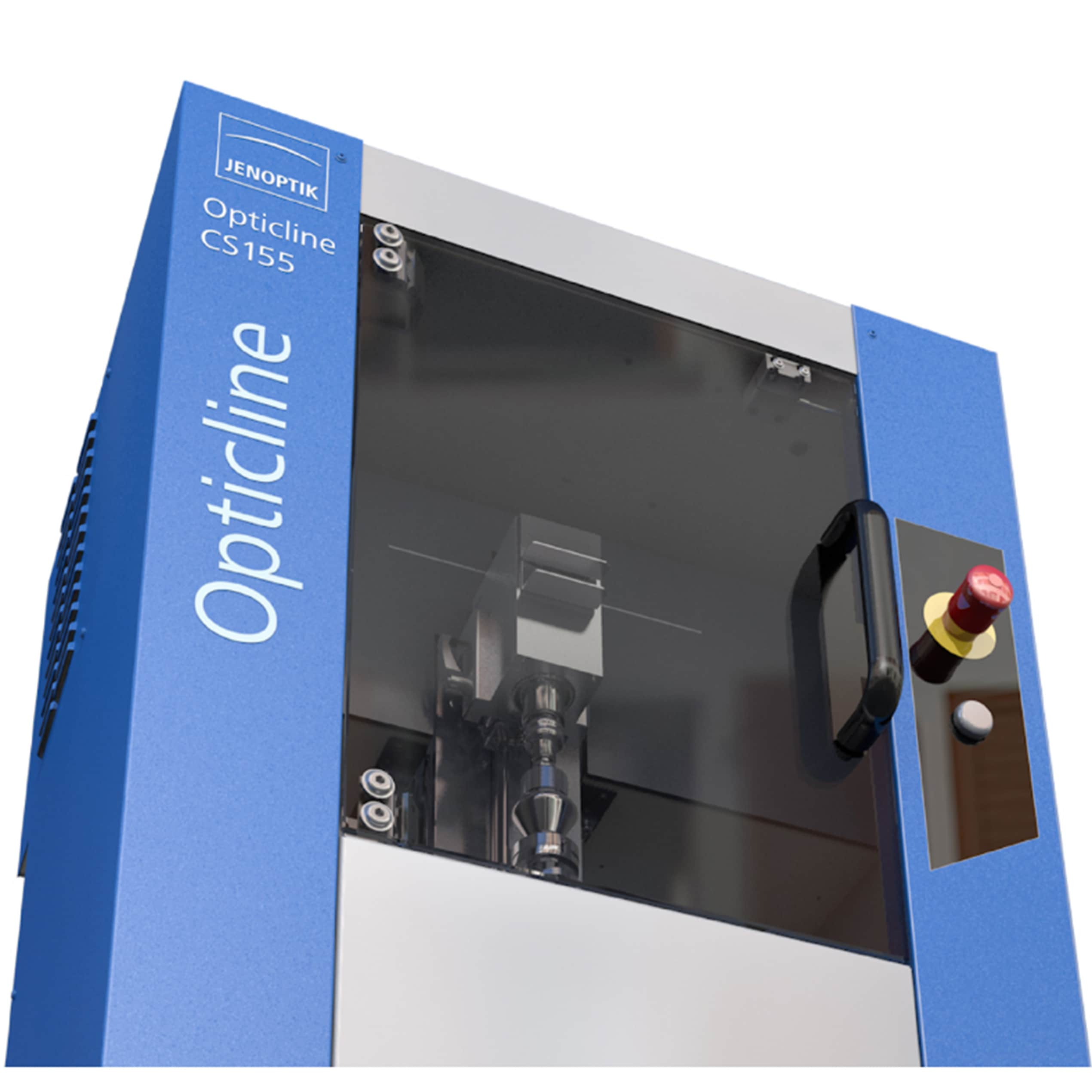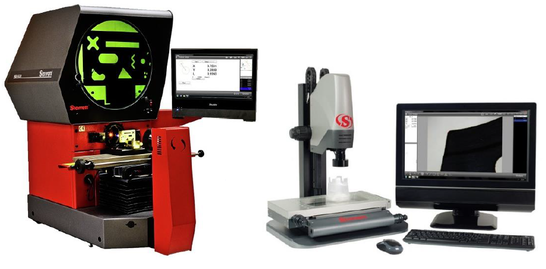The Duty of Optical Dimension Systems in Advancing Width Strategies
Optical measurement systems have changed assessment, bringing a level of accuracy that was when inconceivable. You could be stunned to find out exactly how these technologies, based upon essential principles like representation and interference, are used across various markets. Their non-contact capabilities not just enhance precision however also simplify processes. As you discover even more, you'll discover how these systems are forming the future of measurement and quality control.
The Evolution of Width: A Historical Point Of View
As you explore the history of width, you'll find that its advancement reflects humankind's pursuit for precision and standardization. From ancient human beings using body components as devices of measurement to the growth of standard weights and steps, each step reveals our need for accuracy. The Egyptians developed the pyramids making use of precise dimensions, while the Romans advanced engineering with their innovative measuring devices.
During the Renaissance, scientific developments changed the emphasis toward more empirical techniques, leading the means for modern metrology. The introduction of the metric system in the late 18th century noted a substantial landmark, establishing universal standards. Throughout the 20th century, technological developments additionally changed width, making it possible for very exact measurements in numerous areas.
Today, width remains to advance, incorporating electronic technology and automation. This background highlights not simply the relevance of dimension yet additionally our ruthless quest of enhancing precision and uniformity in our significantly intricate globe.
Concepts of Optical Dimension Solutions
Comprehending the principles behind optical measurement systems is important for accurate cause metrology. You'll intend to take right into account basic optical concepts, measurement accuracy variables, and reliable system calibration methods. Each of these aspects plays an essential role in guaranteeing your dimensions are exact and trustworthy.
Essential Optical Principles
While exploring optical dimension systems, you'll come across basic optical concepts that develop the backbone of exact data acquisition. Light acts in predictable ways, and recognizing these habits-- like representation, refraction, and diffraction-- is crucial for efficient measurements. You'll make use of lenses and mirrors to control light and concentrate it onto your target, making sure precision in your analyses. Additionally, the wave nature of light enables for interference patterns, which can improve measurement resolution. Polarization can likewise play a key duty in distinguishing signal from sound, improving the clearness of your results. By grasping these concepts, you'll be geared up to utilize optical innovations properly, paving the method for advancements in assessment and ensuring your measurements are both reliable and repeatable.
Dimension Precision Variables
To attain high dimension accuracy in optical systems, numerous aspects come into play, affecting the dependability of your outcomes. Top notch lenses and detectors reduce aberrations and sound, guaranteeing your dimensions are precise. By attending to these factors, you can boost the total efficiency of your optical measurement systems, leading to even more accurate and reputable results in your width applications.
System Calibration Methods
Attaining high measurement precision is just part of the equation; correct system calibration strategies are just as important in optical dimension systems. To assure your system delivers trustworthy outcomes, you should consistently calibrate it using common referral materials. Start by changing the optical elements, like lenses and mirrors, to lessen organized mistakes. Next, employ recognized measurements to confirm the system's result and make essential corrections. It's also essential to represent ecological aspects-- temperature level and moisture can influence dimensions. Apply a regular calibration schedule to maintain uniformity with time. Ultimately, record all calibration treatments and outcomes; this will certainly aid you track efficiency and attend to any type of drift in accuracy. With these techniques, you'll enhance the reliability of your optical dimension system.
Key Technologies Behind Optical Dimension
Optical dimension systems depend on several key modern technologies that boost accuracy and efficiency in width. One necessary technology is interferometry, which uses the disturbance of light waves to determine small variations and surface irregularities with severe precision. You'll additionally discover laser scanning systems, which capture thorough 3D data of things swiftly, making them indispensable for dimensional analysis.
Furthermore, CCD and CMOS sensors play a substantial role in transforming light into electric signals, permitting high-resolution imaging and accurate measurements. Advanced formulas for image handling further boost measurement precision by analyzing information in real time, filtering system out noise and improving attributes.
Lastly, optical fiber offer adaptability and the ability to determine in difficult atmospheres while maintaining signal stability. By leveraging these technologies, you can accomplish premium cause your assessment jobs, guaranteeing that your dimensions are both dependable and precise.
Applications of Optical Dimension in Sector
As industries increasingly demand accuracy and performance, the applications of optical measurement systems have ended up being essential throughout various industries. In production, these systems More hints aid you monitor dimensions and tolerances in real-time, guaranteeing quality assurance without taxing manual checks. In the automobile market, optical measurements help in lining up parts with accuracy, boosting safety and security and efficiency.
In electronic devices, you're making use of optical methods to inspect minute features on motherboard, spotting flaws that could result in failings. The aerospace field take advantage of non-destructive screening strategies, permitting you to analyze products and parts without endangering their honesty.
Optical dimension likewise plays a crucial function in textiles, ensuring fabric measurements meet specific requirements. optical measurement. With their capacity to give high-resolution information rapidly, these systems empower you to make informed choices, enhance processes, and ultimately drive innovation throughout your sector
Enhancing Accuracy and Efficiency in Dimensions
When you think of enhancing precision in measurements, precision in your dimension methods is vital. By improving these processes, you can attain quicker results without sacrificing top quality. Let's explore just how adopting innovative optical dimension systems he said can elevate both precision and effectiveness in your job.
Precision in Dimension Methods
Precision in measurement techniques is vital for attaining trusted outcomes in assessment, specifically given that tiny disparities can lead to substantial mistakes. By making use of sophisticated optical dimension systems, you can boost the precision of your dimensions. In addition, exact measurements allow you to preserve high quality control, making sure that products meet stringent specifications.
Improving Measurement Procedures
To boost accuracy and effectiveness in measurements, streamlining your dimension procedures is necessary. Begin by adopting optical dimension systems that give real-time information, minimizing the time invested in hand-operated recording. These systems commonly integrate seamlessly with existing software, permitting you to automate data collection and analysis.
Next, systematize your measurement protocols. By applying constant procedures, you decrease irregularity and improve repeatability. Do not fail to remember to frequently calibrate your devices to guarantee its accuracy.

The Influence of Optical Dimension on R & D
As researchers venture to press the borders of innovation, optical measurement systems have ended up being crucial tools in the development process. These systems offer you with exact, real-time information that boosts your capacity to assess complex materials and structures. In various fields, from biotechnology to aerospace, you rely upon optical measurements to optimize designs and improve product efficiency.

With high-resolution imaging and non-contact approaches, you can minimize example disruption, permitting for even more precise results. This ability to capture minute details increases your R&D cycle, allowing you repeat styles rapidly and efficiently. Optical dimension promotes collaboration throughout techniques, as the data generated is often conveniently interpretable and shareable.
Inevitably, integrating optical measurement systems right into your research study not just boosts performance yet likewise deepens your understanding of the sensations you research study. By leveraging these sophisticated techniques, you're far better furnished to innovate and remain ahead in an affordable landscape.
Future Patterns in Optical Measurement Equipments
With the fast advancement of modern technology, you're likely to see significant changes in optical measurement systems that will certainly redefine their application across numerous industries. You'll see an approach boosted automation and integration of expert system, permitting real-time data evaluation and enhanced precision. Miniaturization is another fad; compact tools will allow measurements in tighter areas, making them ideal for fields like aerospace and biomedical applications.
Anticipate to see systems that can run in difficult settings, supplying reputable dimensions in severe conditions. As these technologies converge, you'll discover that optical view website measurement systems not just improve precision but additionally streamline workflows, ultimately driving advancement and effectiveness in your jobs.
Often Asked Questions
Exactly How Do Optical Dimension Equipments Contrast to Standard Measurement Techniques?
Optical dimension systems supply higher precision and faster results contrasted to typical methods. You'll discover they record more data points accurately, lowering human mistake and boosting reliability, making them a preferred selection in various applications.
What Industries Benefit A Lot Of From Optical Measurement Systems?
You'll find sectors like aerospace, automotive, and electronics benefit most from optical measurement systems. These fields count on exact measurements to guarantee quality and performance, improving efficiency and lowering expenses through innovative innovation.

Are Optical Dimension Systems Expensive to Implement?
Optical dimension systems can be costly to execute, yet their precision and performance often validate the cost. Buying such modern technology can lead to substantial long-term savings and enhancements in quality throughout various applications.
What Skills Are Called For to Operate Optical Dimension Equipments?
To run optical measurement systems, you'll need strong analytical abilities, focus to detail, and efficiency in software devices. Experience with optics and an understanding of measurement principles will likewise improve your efficiency and effectiveness.
Just How Do Ecological Variables Impact Optical Measurements?
Environmental factors like temperature level, air, and humidity quality can distort optical dimensions. You'll see variations in precision because of light interference or refraction. optical measurement system. Maintaining steady problems is important for specific and reliable optical dimension outcomes
Final thought
In summary, optical dimension systems are transforming assessment by giving unequaled precision and effectiveness. As you discover future trends, you'll see exactly how the integration of AI and automation will proceed to raise measurement practices, driving development and boosting quality control.
Achieving high measurement accuracy is only part of the formula; proper system calibration methods are just as essential in optical measurement systems.When you think concerning enhancing precision in measurements, precision in your measurement strategies is important. By making use of innovative optical dimension systems, you can boost the precision of your measurements.To enhance precision and performance in dimensions, simplifying your measurement procedures is necessary. Just How Do Optical Measurement Systems Contrast to Conventional Dimension Techniques?